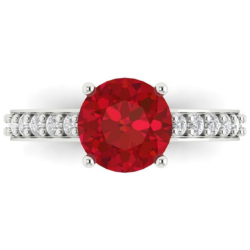Tourmaline is a vibrant and versatile gemstone that captivates with its wide range of colors. Known for its stunning beauty, it has become a favorite among collectors and jewelry enthusiasts alike. This guide will explore everything you need to know about tourmaline, from its origins to its unique properties.
| Natural Tourmaline Gemstone Ring Rose Cut Diamond 18k Rose Gold Handmade Jewelry |
|---|
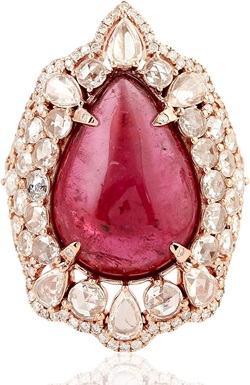
|
| Click on the Image |
What is Tourmaline?
Tourmaline is a fascinating gemstone that comes in an incredible variety of colors. Its name comes from the Sinhalese word “turamali,” meaning “stone with mixed colors.” Chemically, tourmaline is a complex silicate with a formula that includes elements like calcium, magnesium, iron, manganese, aluminum, and lithium. This unique combination of elements in varying proportions gives tourmaline its wide range of colors and properties, making it a favorite among gem enthusiasts.
Here’s a breakdown of the elements and their roles in the formula:
- (Ca, Na, K): These elements—calcium, sodium, and potassium—can substitute for each other in the crystal structure.
- (Mg, Fe, Mn, Al, Li): Magnesium, iron, manganese, aluminum, and lithium also substitute for one another in the crystal structure.
- (Al, Mg): Aluminum and magnesium occupy the same positions in the crystal lattice.
- (BO3): This represents the borate group, a key component of the tourmaline structure.
- Si6O18: This is the silicate framework, a common structural unit in many minerals.
- (OH, F): Hydroxide (OH) or fluoride (F) ions are present in the crystal structure.
Different proportions of these elements lead to tourmaline’s diverse colors and properties.
Quick Summary
Tourmaline In a Nutshell.Tourmaline At A Glance For Quickly Understanding The Gemstone.Go To Section: |
|
How Does Tourmaline Form?Tourmaline forms in pegmatite rock veins, created by hydrothermal activity deep within the Earth. As hot, mineral-rich water cools and solidifies, it crystallizes into Tourmaline, resulting in the wide variety of colors and types based on the specific minerals present during formation.Go To Section: |
|
What Colors Do Tourmaline Gemstones Come In?Tourmaline is celebrated for its diverse color spectrum, including shades like green, pink, blue, and the rare multicolored variations, each offering unique appeal.Go To Section: |
|
Where is Tourmaline Found?Major sources of Tourmaline include Brazil, Afghanistan, and the United States, with each region producing distinct types and colors of the gemstone.Go To Section: |
|
How to Identify Quality Tourmaline Stones?Evaluating Tourmaline involves considering factors like color saturation, clarity, cut, and carat weight, which collectively determine the stone’s overall quality and value.Go To Section: |
|
How to Care for Tourmaline Jewelry?Proper care for Tourmaline jewelry includes avoiding harsh chemicals, storing pieces separately to prevent scratches, and cleaning them with mild soapy water and a soft brush.Go To Section: |
|
|
Tourmaline In a NutshellBack To Top |
| Tourmaline showcases an impressive spectrum of colors, with contributions from elements like iron, titanium, and manganese. Its vibrant hues may also result from natural or lab-induced radiation. | |
| Mineral | Borosilicate Mineral Of Complex And Variable Composition |
|---|---|
| Chemical Composition | ***** |
| Elbaite | Na(Li1.5,Al1.5)Al6Si6O18(BO3)3(OH)4 |
| Dravite | NaMg3Al6Si6O18(BO3)3(OH)4 |
| Liddicoatite | Ca(Li2Al)Al6Si6O18(BO3)3(OH)3F |
| Chromedravite | NaMg3Cr6Si6O18(BO3)3(OH)4 |
| Color | All colors |
| Refractive Index | 1.624 to 1.644 |
| Birefringence | 0.018 to 0.040 |
| Specific Gravity | 3.06 (+0.20, -0.06) |
| Mohs Hardness | 7 to 7.5 |
| Birthstones & Anniversaries | Tourmaline and Opal are October birthstones. Tourmaline also celebrates the eighth wedding anniversary. |
| Treatments |
|
|
|
How Does Tourmaline Form?Back To Top |
Tourmaline forms in pegmatite rock veins, created by hydrothermal activity deep within the Earth. As hot, mineral-rich water cools and solidifies, it crystallizes into Tourmaline, resulting in the wide variety of colors and types based on the specific minerals present during formation. Tourmaline forms in various geological environments, but it’s most commonly found in igneous and metamorphic rocks. The crystal structure of tourmaline accommodates a wide range of elements, contributing to its remarkable range of colors. The gemstone often forms in pegmatites, coarse-grained igneous rocks that provide the perfect conditions for large crystals to grow.
Understanding Tourmaline as a Gemstone
Tourmaline is a complex gemstone with unique characteristics. It appears in various colors, from deep reds and vibrant greens to electric blues and pastel pinks. Trace elements like iron, manganese, and lithium often influence its color, contributing to its rich hues. The jewelry market highly prizes tourmaline for its beauty and durability. With a hardness of 7 to 7.5 on the Mohs scale, tourmaline works well for everyday wear, making it a popular choice for rings, necklaces, and other fine jewelry.
| Natural Pink Tourmaline Solitaire Pendant Necklace in Platinum or 14K Solid Gold |
|---|
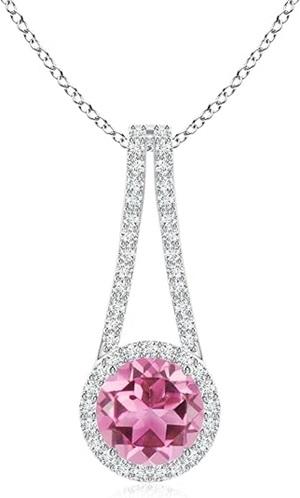
|
| Click on the Image |
The Different Species of Tourmaline
Tourmaline is not a single mineral but a group of closely related minerals that form different species. The most common species include Elbaite, Dravite, and Schorl. Elbaite, known for its vivid colors, is the type most often used in gemstones. Dravite typically appears in brown or yellow hues, while Schorl usually presents itself as black. Each species of tourmaline offers unique characteristics and color variations, making tourmaline a truly diverse gemstone. Collectors and gem enthusiasts often seek specific species for their unique qualities, adding to the gemstone’s allure.
Tourmaline Crystal Structure and Physical Properties
Tourmaline crystals have a complex structure that contributes to their wide color range and durability. The trigonal crystal structure forms prismatic, often vertically striated crystals. This structure, combined with various trace elements, allows tourmaline to exhibit pleochroism, meaning it shows different colors from different angles. Tourmaline’s physical properties, such as its hardness, make it an excellent choice for jewelry that can withstand daily wear. Its resistance to scratches and relatively high melting point also add to its popularity in fine jewelry.
|
|
What Colors Do Tourmaline Gemstones Come In?Back To Top |
Tourmaline gemstones dazzle with their array of colors. They appear in nearly every hue, from deep greens to vibrant reds and even rare blues. This wide color range makes tourmaline one of the most versatile gemstones in jewelry.
Exploring the Range of Tourmaline Colors
Tourmaline’s color spectrum is one of its most striking features. This gemstone can appear in almost any color, thanks to the variety of elements within its crystal structure. From the rich greens of verdelite to the striking reds of rubellite, each color variation offers something unique. Some tourmalines even display bi-colored or tri-colored patterns, where different shades blend beautifully within a single stone. This wide range of colors not only adds to tourmaline’s appeal but also makes it a favorite among gem collectors and jewelry designers. The color of tourmaline often results from trace elements like iron, manganese, or lithium, which influence its hue and intensity.
| Mixed Color Tourmaline Gemstone Bead Necklace |
|---|
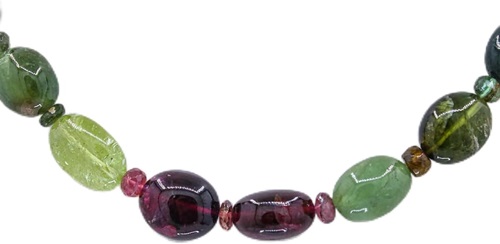
|
| Click on the Image |
Green Tourmaline and Its Varieties.
Green tourmaline, also known as verdelite, is one of the most common and popular varieties of this gemstone. It comes in shades ranging from light mint to deep forest green. Chromium or vanadium in the crystal structure gives the stone its vibrant green color, similar to emerald. Some green tourmalines are so vividly green that they rival the finest emeralds in appearance. This variety of tourmaline is highly valued for its color, clarity, and brilliance. Green tourmaline often appears in fine jewelry, where its rich color adds a touch of elegance and sophistication to any piece.
| Solid 14k White Gold Pendant for Women Set with Natural 7.5 ct Green Tourmaline and 3.5 ctw Diamonds |
|---|
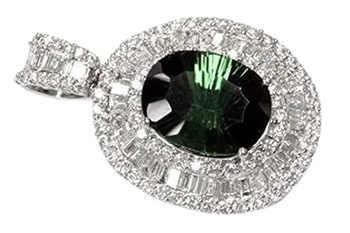
|
| Click on the Image |
The Beauty of Pink and Red Tourmaline.
Pink and red tourmalines, often referred to as rubellite, rank among the most sought-after varieties of this gemstone. These stones range from soft pastel pinks to intense, vivid reds. The red hues in rubellite often rival those of rubies, making them a popular choice for those who love bold, vibrant jewelry. Pink tourmaline, on the other hand, is cherished for its romantic and feminine appeal. Both pink and red tourmalines frequently feature in rings, necklaces, and earrings, where their striking colors can be showcased. Manganese gives these tourmalines their beautiful pink to red tones.
Discover the Unique Charm of Watermelon Tourmaline.
Watermelon tourmaline is a captivating gemstone known for its striking color pattern, resembling the cross-section of a watermelon. This rare variety displays a vivid green outer layer with a bright pink or red core, often with a white band in between. The natural combination of colors within a single crystal makes watermelon tourmaline highly sought after by collectors and jewelry enthusiasts. Its playful and vibrant appearance adds a unique touch to any piece of jewelry, making it a conversation starter and a favorite among those who appreciate unusual and eye-catching gemstones.
| Natural Watermelon Tourmaline Bio Slice |
|---|
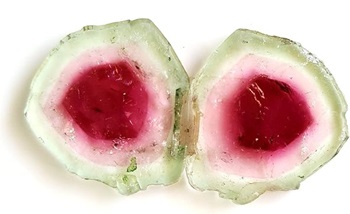
|
| Click on the Image |
What Makes Paraíba Tourmaline Unique?
Paraíba tourmaline is one of the rarest and most valuable varieties of tourmaline. It is known for its stunning neon blue to green hues, which are unlike any other gemstone. The vivid color of Paraíba tourmaline comes from the presence of copper and manganese, which create its unique, electrifying shades. Discovered in the late 1980s in the Paraíba region of Brazil, this gemstone quickly became one of the most coveted in the world. Its rarity and extraordinary color make Paraíba tourmaline highly sought after by collectors and jewelers alike. Paraíba tourmalines often feature in high-end jewelry, where their intense color and brilliance can be fully appreciated.
| 2.11 Carats GIA Certified Natural Mozambique Paraiba Tourmaline Ring |
|---|
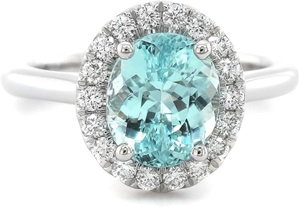
|
| Click on the Image |
The Allure of Blue Tourmaline: A Gemstone of Deep Serenity.
Blue tourmaline, also known as indicolite, is cherished for its rich, deep blue color that evokes a sense of calm and tranquility. This rare and beautiful gemstone ranges from light blue to deep teal, making it a favorite for those seeking a distinctive and serene addition to their jewelry collection. Its mesmerizing color and rarity make blue tourmaline highly valued, standing out in elegant, sophisticated designs.
|
|
Where is Tourmaline Found?Back To Top |
Tourmaline is found in many parts of the world, with significant deposits in Brazil, Africa, and the United States. These gemstones often come from regions with rich mineral diversity. The mine’s location can influence the color and quality of the tourmaline.
Global Locations of Tourmaline Mines.
Tourmaline is mined in various locations across the globe, each offering unique varieties of this gemstone. Brazil is one of the most prominent sources, known for producing a wide range of tourmaline colors, including the rare Paraíba variety. Africa also plays a significant role, with countries like Mozambique, Nigeria, and Madagascar yielding some of the finest tourmalines, particularly in vibrant greens and reds. The United States, specifically California and Maine, has long been known for its high-quality pink and green tourmalines. Additionally, Afghanistan, Pakistan, and Sri Lanka contribute to the global supply of this versatile gemstone.
| Natural Pink Tourmaline Solitaire Ring |
|---|
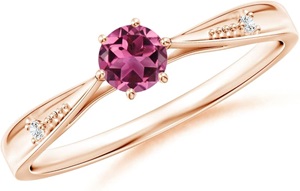
|
| Click on the Image |
Famous Tourmaline Mines in Brazil.
Brazil is renowned for its rich deposits of tourmaline, particularly in the states of Minas Gerais and Paraíba. Minas Gerais produces tourmalines in a rainbow of colors, from deep blues to vivid greens and vibrant pinks. The Paraíba region, discovered in the late 1980s, is legendary for its rare and electrifying blue-green tourmalines, known as Paraíba tourmalines. These stones are prized for their intense color and rarity, making them some of the most valuable tourmalines in the world. Brazilian tourmalines are highly sought after by jewelers and collectors alike, adding a touch of exotic beauty to any jewelry piece.
Tourmaline Deposits in Sri Lanka
Sri Lanka, historically known as Ceylon, is another important source of tourmaline. The island’s gem-rich soils have produced some remarkable tourmalines, often found in shades of green, pink, and red. Sri Lankan tourmalines are celebrated for their clarity and vibrant colors, making them a popular choice for fine jewelry. The country’s deposits are typically found in alluvial gravels, where gemstones naturally weather out of their host rock. Sri Lanka’s long history of gem mining adds to the allure of its tourmalines, making them a cherished addition to any gemstone collection.
|
|
How to Identify Quality Tourmaline Stones?Back To Top |
To identify quality tourmaline, examine its color, clarity, and cut. The most valuable stones have vivid, consistent colors and minimal inclusions. Additionally, a well-executed cut enhances the gemstone’s brilliance and overall appeal.
Tourmaline Quality Factors to Consider
Several factors determine the quality and value of tourmaline. Color is the most important factor, with richer and more saturated hues commanding higher prices. Clarity is also crucial; while some inclusions are common, fewer visible flaws generally indicate a higher-quality stone. The cut of the tourmaline plays a significant role as well, as it can either enhance or diminish the stone’s natural beauty. A well-cut tourmaline will have excellent light reflection, enhancing its brilliance and color. Origin can also influence value, with tourmalines from renowned locations like Brazil and Paraíba being particularly prized.
| Paraiba Tourmaline 3.45ct Oval Shape GIA Certified Adjacent Round Brilliant Natural Diamonds 1.74cttw 18K White Gold Ring |
|---|
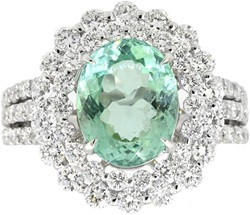
|
| Click on the Image |
Common Inclusions in Tourmaline
Inclusions are natural features within a gemstone, and tourmaline is no exception. Common inclusions in tourmaline include needle-like structures, often referred to as “silk,” and liquid-filled cavities that can sometimes create a cat’s eye effect. While these inclusions are usually visible under magnification, they can sometimes be seen with the naked eye. In some cases, inclusions add character and uniqueness to the stone, while in others, they might lower its value. It’s essential to consider the type and visibility of inclusions when evaluating tourmaline, as they can impact both the appearance and durability of the gemstone.
Evaluating Tourmaline’s Cut and Facet
The cut and facet of a tourmaline are critical in determining its overall beauty and value. A well-cut tourmaline will maximize the stone’s natural brilliance, showcasing its color and clarity to their fullest potential. The precision of the cut affects how light is reflected within the gemstone, creating a sparkling effect that enhances its visual appeal. Common cuts for tourmaline include oval, emerald, and cushion cuts, each offering a different way to display the stone’s color and brilliance. A poor cut, on the other hand, can lead to a dull appearance, even in a stone with excellent color and clarity. Therefore, evaluating the cut and facet quality is crucial when selecting a tourmaline gemstone.
|
|
How to Care for Tourmaline Jewelry?Back To Top |
Caring for tourmaline jewelry involves regular cleaning and careful storage to maintain its brilliance. You should protect tourmaline from harsh chemicals and physical damage. Proper care ensures your gemstone retains its beauty over time.
Proper Cleaning Techniques for Tourmaline.
To clean tourmaline jewelry, use warm water, mild soap, and a soft brush. Gently scrub the gemstone to remove dirt and oils, paying special attention to crevices. Rinse thoroughly and pat dry with a soft cloth. Avoid using harsh chemicals or ultrasonic cleaners, as these can damage the stone’s surface and affect its color. For a deeper clean, consider having your tourmaline jewelry professionally cleaned by a jeweler, who can safely restore its shine without risking damage.
Storing Tourmaline Jewelry Safely
Proper storage prevents scratches and other damage to tourmaline jewelry. Store your tourmaline pieces in a soft-lined jewelry box, ideally in separate compartments or wrapped in a soft cloth to avoid contact with other gemstones. Tourmaline can scratch or be scratched by other harder stones, so keeping them apart is crucial. If you’re traveling, use a padded jewelry case to protect your tourmaline from being jostled or knocked around.
| Earrings with Green and Rosy Tourmaline |
|---|
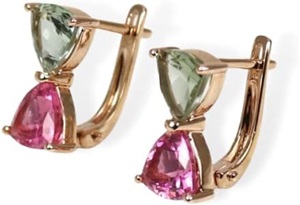
|
| Click on the Image |
Preventing Damage to Tourmaline Stones
Preventing damage to tourmaline involves being mindful of how and when you wear your jewelry. Avoid wearing tourmaline jewelry during activities that involve harsh chemicals or physical labor, as these can cause scratches, chips, or discoloration. Tourmaline has a hardness of 7 to 7.5 on the Mohs scale, making it relatively durable, but it’s still susceptible to damage from hard knocks or rough surfaces. Regularly inspect your tourmaline jewelry for any signs of wear or loose settings, and have any issues repaired promptly by a professional jeweler to maintain its beauty and integrity.
See More Gemstones As Follows
IMAGE GALLERY
2.25 ct Round Cut Solitaire with accent Stunning Genuine Simulated Pink Tourmaline Modern Promise Statement Ring 14k White Gold
Click On The Image
